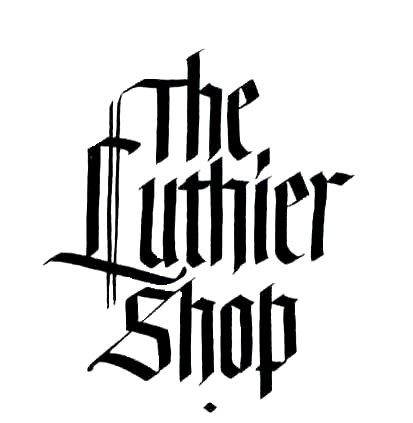Pernambuco update – AFVBM on Zoom, August 11, 2022 Yung Chin
CITES: The Convention on International Trade in Endangered Species of Wild Fauna and Flora, is an international agreement between governments. Its aim is to ensure that international trade in specimens of wild animals and plants does not threaten the survival of the species. It has been in place since 1975.
In June 2007 Pernambuco was listed in Appendix 2 and the following commodities are regulated by the CITES listing of Pernambuco: logs, sawn wood, veneer sheets, and unfinished wood articles used for the fabrication of bows for stringed musical instruments. The listing does NOT include finished wood articles made of Pernambuco wood.
This past spring, Brazil has submitted to the CITES their proposal to move Pernambuco from Appendix 2 to Appendix 1.
The next Conference of the Parties, COP, will be held in Panama November 14-25 this fall.
Some of the consequences for bowmakers and musicians if this proposal is accepted at Cop19:
For bowmakers: Only pre-convention trade (i.e. bows made with pernambuco dating from before 09/13/2007) would be allowed and subject to CITES permits (export permit, re-export certificate, import permit)
For musicians: any international journey with a bow made from pernambuco would require a Musical Instrument Certificate (MIC). The border crossing must be done at specific customs ports and the MIC must be systematically stamped by the dedicated services: this is restrictive and complex for the users, for example there are only 17 possible entry points for the USA.
To obtain this certificate, the musician must then prove that the pernambuco wood used for their bow dates from before 09/13/2007, whether made before or after this date.
If she or he has a correctly written invoice from the seller of the bow, there should be no problem to obtain a MIC. However, some countries might put additional regulations on top of CITES regulation which would be more demanding in some cases and require other documents.
What actions have the bowmakers and violinmakers taken since learning of the Brazilian proposal?
There have been many international meetings bringing awareness to most of the bow and violin trade worldwide. Most of the countries who have violin and bow organizations are fully involved in bringing awareness to their membership.
Bowmakers have produced a great deal of data in a very short period of time which will be used by those who represent us at various meetings held with NGO’s and governmental regulatory agencies around the world. In particular, I would like to thank Lynn Hannings of USA, Arthur Dubroca of France and Thomas Gerbeth of Germany for assembling much of this data. These meetings have started and are CRITICAL if we are to have any chance for a good outcome in November at the COP.
Who is representing us at these meetings?
There is an international group of various stakeholders: bowmakers, violin makers, music
manufacturers, organizations representing orchestras, NGO’s, and of course John Bennett. John has been representing the trade since around 2011 and he has developed a very good team who have helped with the ivory, rosewood, and ebony issues for musical instruments. This international team is highly respected in the CITES universe. John’s first involvement with bowmakers was when I meet him at an informal meeting in NYC when he was the director of a NGO the musician Sting had in New York and after a few years he became involved in the IPCI. Since 1999, many bowmakers around the world mobilized within the IPCI (International Pernambuco Conservation Initiative) to finance the planting of pernambuco in Brazil. As of 2022, approximately 500,000 trees have been planted in the expectation that some of them will mature to be harvested in a sustainable and renewable way one day. Despite the efforts of most of the profession, some makers have deviated from this initiative to succumb to illegal trade and thus tarnish the image of bowmakers who are actively involved in preserving the forest, its trees and its biodiversity.
It will be very difficult for those who represent us at CITES related meetings if those involved in illegal activities do not stop. Only concrete actions led by our organizations to fight the illegal trade will be relevant and make our voice heard to find the most suitable solutions to sustain pernambuco and preserve our craft which we are all involved in. Of course, here in the USA, the Lacey Act enacted in 1900 is looming.
To remind everyone: there has been a five-year long investigation into the illegal trade of Pernambuco in Brazil and the investigation is spreading worldwide. Much data has been collected by the Brazilian authorities via social media.
Solutions:
Support IPCI: We are hearing from many governmental authorities around the world how impressed they are with what we have achieved with so little. Many of the technical details mentioned in the proposed Brazilian document are in fact from the work of IPCI.
Alliance-USA: This is an off shoot of EILA and was recently created to centralize our worldwide efforts with regard to conservation and associated activities. The three goals are representation, education and direct action. As AFVBM members, you are already members of Alliance-USA, please visit the website: alliance-usa.org. There you will find regularly updated information.
Hold off on buying Pernambuco sticks or boards till after we see what happens at the COP. Of course, if you have declared your Pernambuco in 2007, you can sell your wood easily inside the borders. We expect to see more direction from the Brazilian authorities after the COP as to what will be legal or not legal pertaining to sticks coming out of Brazil. We are trying to find solutions for ALL bowmakers worldwide. For sure, even in the best of circumstances after the COP meeting in Panama, the trade will be very different.
THANK YOU for taking the time to attend this meeting today.
